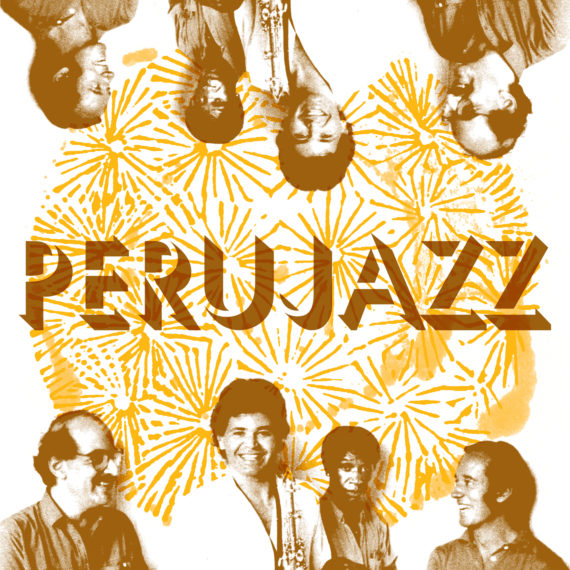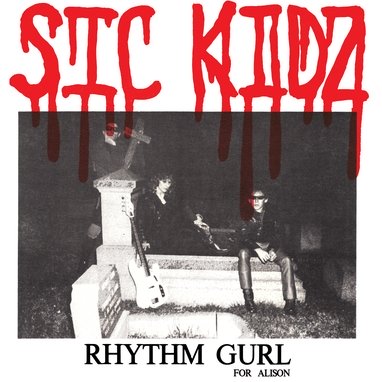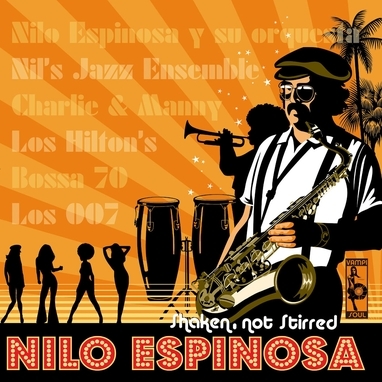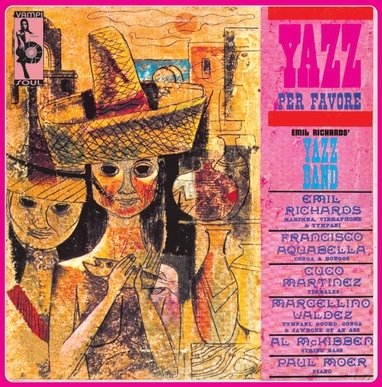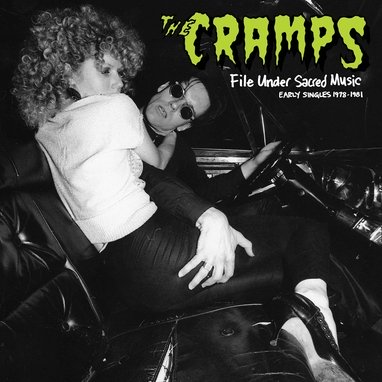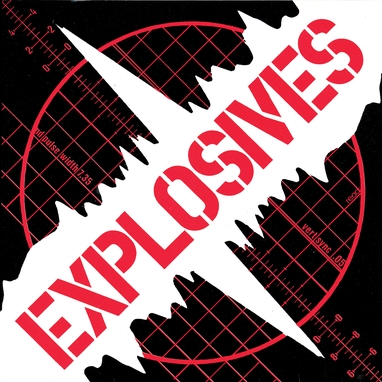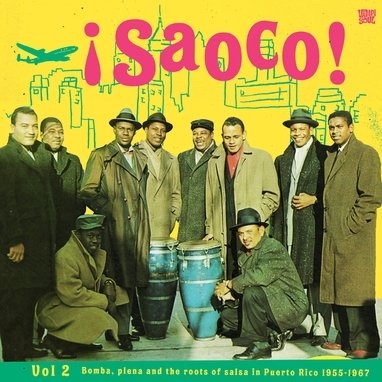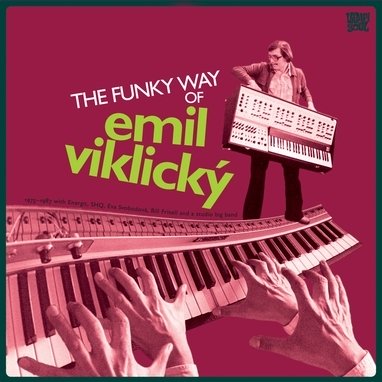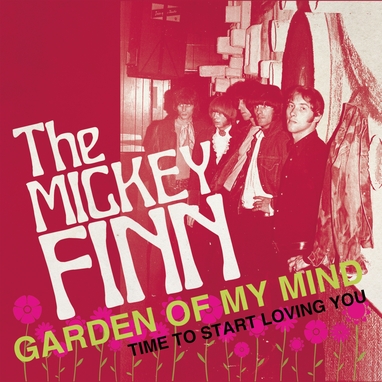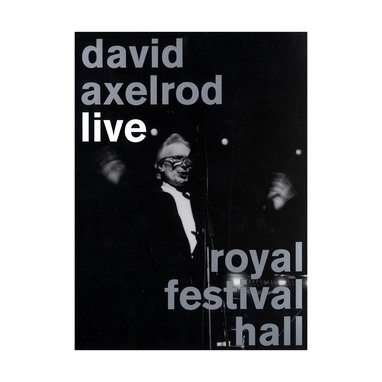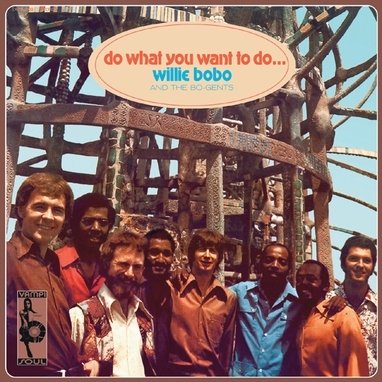Perujazz
Perujazz
15,00€
Vampisoul
Perujazz
Perujazz
This LP is of the best kept secrets in Peruvian music. Formed in 1984, Perujazz recorded their debut album in Italy in 1987 while touring the country. The original small pressing came out under the title Verde Machu Picchu, becoming a very hard to find record for many years. Vampisoul presents it now with new artwork and liner notes written by Luis Alvarado. It is the sound created by four individuals who invented their own musical universe, a band that managed to define a new place at the meeting point of traditional and avant-garde music, taking jazz into new territories. 180g vinyl.
Manongo Mujica (drums, percussion), Jean Pierre Magnet (tenor saxophone), Julio Chocolate Algendones (percussion) and Enrique Luna (electric bass) founded Perujazz in 1984. All four already had embarked on diverse musical ventures when they formed the band. Mujica had played as a jazz drummer and also with the psychedelic rock group Los Mad’s and then as an experimental music percussionist. Jean Pierre had been a multi-instrumentalist in Traffic Sound and saxophonist in several jazz ensembles. Chocolate had been part of the Afro-Peruvian ensemble Perú Negro and was one of Chabuca Granda’s percussionists of choice. His meeting with Manongo Mujica in 1981 was the beginning of series of collaborations, blending African influences and avant-garde jazz percussion. Meanwhile, in Chile, Enrique Luna had been a member of several fusion ensembles and, together with Manongo, set up the improvisation band Solos at the end of the 70s. Carrying this musical baggage with them, Perujazz was formed in 1984 when Jean Pierre, without knowing what the future would hold, got them together to play jazz standards in a venue that had just opened called Satchmo. One day, the pianist couldn’t make it and the band noticed that the absence of this traditional jazz instrument created a different sound that they decided to explore in depth. They were part of the new musical scene in Lima, strongly influenced by the cultural climate of the 70s, by Chabuca Granda and his innovations in criollismo, as well as by neofolk and nueva canción, all under the nationalist politics of the government of General Juan Velasco Alvarado. The 80s ushered in a period of democratic transition and during the early years of the decade a new generation of fusion artists thrived. The country went through some tough times in this decade, due to the economic crisis and terrorist violence, which was far from being a propitious backdrop for the bold music projects that were fighting for a place on the cultural scene. Perujazz managed to hold its ground and soon led the way in the avant-garde jazz scene. Inspired by jazz fusion from the 70s, they mixed cajón drums and Afro-Peruvian, Andean and jungle sounds with jazz, rock and funk in a powerful blend full of groove and psychedelia. They quickly came to the attention of producer Eduardo Lipschutz, who promoted the group and arranged a three-month tour round Europe. One of the countries they visited was Italy, where they played many venues and made TV appearances, including a lunchtime variety show produced by the RAI, for which they had to prepare a short version of one of their tracks. They started rehearsing for it, and one of those rehearsals unleashed the story of this LP. A producer, guitarist and singer called Toni Cosenza heard them and, surprised by their sound, approached them and proposed producing an album for the Italian market. He took them to a Rome’s Studi Titania and there, in two afternoons, they recorded five songs for a promotional LP but then lost track of the record after that. That LP ended up being a co-production between the RAI and the Instituto Italo Americano. Titled Verde Machu Picchu, by the Quartetto Perù Jazz, it was released in 1987 in a vinyl edition that wasn’t widely distributed. The tracks on the album radiate the rich sound quality and style the group had achieved at that stage. The trip had brought the band close together thanks to the daily discipline of rehearsals. During those years, Perujazz would journey far and wide, becoming one of the most original Peruvian ensembles and also one of the most international in scope. Since then their line-up has gone through multiple changes and today the band members are Manongo Mujica, Jean Pierre Magnet, César Ballumbrosio, Andrés Prado and Julio Zavala. They have released several studio and live albums, Mágico being the last to appear in 2015. This LP has been one of the best kept secrets in Peruvian music not just because it documents one of the key bands of Afro-Peruvian jazz but also because it’s testimony to the period when the group reached maturity. Now we can enjoy the sound created by the coming together of four individuals who invented their own musical universe. Few bands display the imagination and deep feeling that we find in Perujazz. It’s a band that’s managed to define a new place at the meeting point of traditional and avant-garde music, taking jazz into new territories. Luis Alvarado
Productos relacionados
15,00€
This LP is of the best kept secrets in Peruvian music. Formed in 1984, Perujazz recorded their debut album in Italy in 1987 while touring the country. The original small pressing came out under the title Verde Machu Picchu, becoming a very hard to find record for many years. Vampisoul presents it now with new artwork and liner notes written by Luis Alvarado. It is the sound created by four individuals who invented their own musical universe, a band that managed to define a new place at the meeting point of traditional and avant-garde music, taking jazz into new territories. 180g vinyl.
Manongo Mujica (drums, percussion), Jean Pierre Magnet (tenor saxophone), Julio Chocolate Algendones (percussion) and Enrique Luna (electric bass) founded Perujazz in 1984. All four already had embarked on diverse musical ventures when they formed the band. Mujica had played as a jazz drummer and also with the psychedelic rock group Los Mad’s and then as an experimental music percussionist. Jean Pierre had been a multi-instrumentalist in Traffic Sound and saxophonist in several jazz ensembles. Chocolate had been part of the Afro-Peruvian ensemble Perú Negro and was one of Chabuca Granda’s percussionists of choice. His meeting with Manongo Mujica in 1981 was the beginning of series of collaborations, blending African influences and avant-garde jazz percussion. Meanwhile, in Chile, Enrique Luna had been a member of several fusion ensembles and, together with Manongo, set up the improvisation band Solos at the end of the 70s. Carrying this musical baggage with them, Perujazz was formed in 1984 when Jean Pierre, without knowing what the future would hold, got them together to play jazz standards in a venue that had just opened called Satchmo. One day, the pianist couldn’t make it and the band noticed that the absence of this traditional jazz instrument created a different sound that they decided to explore in depth. They were part of the new musical scene in Lima, strongly influenced by the cultural climate of the 70s, by Chabuca Granda and his innovations in criollismo, as well as by neofolk and nueva canción, all under the nationalist politics of the government of General Juan Velasco Alvarado. The 80s ushered in a period of democratic transition and during the early years of the decade a new generation of fusion artists thrived. The country went through some tough times in this decade, due to the economic crisis and terrorist violence, which was far from being a propitious backdrop for the bold music projects that were fighting for a place on the cultural scene. Perujazz managed to hold its ground and soon led the way in the avant-garde jazz scene. Inspired by jazz fusion from the 70s, they mixed cajón drums and Afro-Peruvian, Andean and jungle sounds with jazz, rock and funk in a powerful blend full of groove and psychedelia. They quickly came to the attention of producer Eduardo Lipschutz, who promoted the group and arranged a three-month tour round Europe. One of the countries they visited was Italy, where they played many venues and made TV appearances, including a lunchtime variety show produced by the RAI, for which they had to prepare a short version of one of their tracks. They started rehearsing for it, and one of those rehearsals unleashed the story of this LP. A producer, guitarist and singer called Toni Cosenza heard them and, surprised by their sound, approached them and proposed producing an album for the Italian market. He took them to a Rome’s Studi Titania and there, in two afternoons, they recorded five songs for a promotional LP but then lost track of the record after that. That LP ended up being a co-production between the RAI and the Instituto Italo Americano. Titled Verde Machu Picchu, by the Quartetto Perù Jazz, it was released in 1987 in a vinyl edition that wasn’t widely distributed. The tracks on the album radiate the rich sound quality and style the group had achieved at that stage. The trip had brought the band close together thanks to the daily discipline of rehearsals. During those years, Perujazz would journey far and wide, becoming one of the most original Peruvian ensembles and also one of the most international in scope. Since then their line-up has gone through multiple changes and today the band members are Manongo Mujica, Jean Pierre Magnet, César Ballumbrosio, Andrés Prado and Julio Zavala. They have released several studio and live albums, Mágico being the last to appear in 2015. This LP has been one of the best kept secrets in Peruvian music not just because it documents one of the key bands of Afro-Peruvian jazz but also because it’s testimony to the period when the group reached maturity. Now we can enjoy the sound created by the coming together of four individuals who invented their own musical universe. Few bands display the imagination and deep feeling that we find in Perujazz. It’s a band that’s managed to define a new place at the meeting point of traditional and avant-garde music, taking jazz into new territories. Luis Alvarado
Productos relacionados
Perujazz
This LP is of the best kept secrets in Peruvian music. Formed in 1984, Perujazz recorded their debut album in Italy in 1987 while touring the country. The original small pressing came out under the title Verde Machu Picchu, becoming a very hard to find record for many years. Vampisoul presents it now with new artwork and liner notes written by Luis Alvarado. It is the sound created by four individuals who invented their own musical universe, a band that managed to define a new place at the meeting point of traditional and avant-garde music, taking jazz into new territories. 180g vinyl.
Manongo Mujica (drums, percussion), Jean Pierre Magnet (tenor saxophone), Julio Chocolate Algendones (percussion) and Enrique Luna (electric bass) founded Perujazz in 1984. All four already had embarked on diverse musical ventures when they formed the band. Mujica had played as a jazz drummer and also with the psychedelic rock group Los Mad’s and then as an experimental music percussionist. Jean Pierre had been a multi-instrumentalist in Traffic Sound and saxophonist in several jazz ensembles. Chocolate had been part of the Afro-Peruvian ensemble Perú Negro and was one of Chabuca Granda’s percussionists of choice. His meeting with Manongo Mujica in 1981 was the beginning of series of collaborations, blending African influences and avant-garde jazz percussion. Meanwhile, in Chile, Enrique Luna had been a member of several fusion ensembles and, together with Manongo, set up the improvisation band Solos at the end of the 70s. Carrying this musical baggage with them, Perujazz was formed in 1984 when Jean Pierre, without knowing what the future would hold, got them together to play jazz standards in a venue that had just opened called Satchmo. One day, the pianist couldn’t make it and the band noticed that the absence of this traditional jazz instrument created a different sound that they decided to explore in depth. They were part of the new musical scene in Lima, strongly influenced by the cultural climate of the 70s, by Chabuca Granda and his innovations in criollismo, as well as by neofolk and nueva canción, all under the nationalist politics of the government of General Juan Velasco Alvarado. The 80s ushered in a period of democratic transition and during the early years of the decade a new generation of fusion artists thrived. The country went through some tough times in this decade, due to the economic crisis and terrorist violence, which was far from being a propitious backdrop for the bold music projects that were fighting for a place on the cultural scene. Perujazz managed to hold its ground and soon led the way in the avant-garde jazz scene. Inspired by jazz fusion from the 70s, they mixed cajón drums and Afro-Peruvian, Andean and jungle sounds with jazz, rock and funk in a powerful blend full of groove and psychedelia. They quickly came to the attention of producer Eduardo Lipschutz, who promoted the group and arranged a three-month tour round Europe. One of the countries they visited was Italy, where they played many venues and made TV appearances, including a lunchtime variety show produced by the RAI, for which they had to prepare a short version of one of their tracks. They started rehearsing for it, and one of those rehearsals unleashed the story of this LP. A producer, guitarist and singer called Toni Cosenza heard them and, surprised by their sound, approached them and proposed producing an album for the Italian market. He took them to a Rome’s Studi Titania and there, in two afternoons, they recorded five songs for a promotional LP but then lost track of the record after that. That LP ended up being a co-production between the RAI and the Instituto Italo Americano. Titled Verde Machu Picchu, by the Quartetto Perù Jazz, it was released in 1987 in a vinyl edition that wasn’t widely distributed. The tracks on the album radiate the rich sound quality and style the group had achieved at that stage. The trip had brought the band close together thanks to the daily discipline of rehearsals. During those years, Perujazz would journey far and wide, becoming one of the most original Peruvian ensembles and also one of the most international in scope. Since then their line-up has gone through multiple changes and today the band members are Manongo Mujica, Jean Pierre Magnet, César Ballumbrosio, Andrés Prado and Julio Zavala. They have released several studio and live albums, Mágico being the last to appear in 2015. This LP has been one of the best kept secrets in Peruvian music not just because it documents one of the key bands of Afro-Peruvian jazz but also because it’s testimony to the period when the group reached maturity. Now we can enjoy the sound created by the coming together of four individuals who invented their own musical universe. Few bands display the imagination and deep feeling that we find in Perujazz. It’s a band that’s managed to define a new place at the meeting point of traditional and avant-garde music, taking jazz into new territories. Luis Alvarado
This LP is of the best kept secrets in Peruvian music. Formed in 1984, Perujazz recorded their debut album in Italy in 1987 while touring the country. The original small pressing came out under the title Verde Machu Picchu, becoming a very hard to find record for many years. Vampisoul presents it now with new artwork and liner notes written by Luis Alvarado. It is the sound created by four individuals who invented their own musical universe, a band that managed to define a new place at the meeting point of traditional and avant-garde music, taking jazz into new territories. 180g vinyl.
Manongo Mujica (drums, percussion), Jean Pierre Magnet (tenor saxophone), Julio Chocolate Algendones (percussion) and Enrique Luna (electric bass) founded Perujazz in 1984. All four already had embarked on diverse musical ventures when they formed the band. Mujica had played as a jazz drummer and also with the psychedelic rock group Los Mad’s and then as an experimental music percussionist. Jean Pierre had been a multi-instrumentalist in Traffic Sound and saxophonist in several jazz ensembles. Chocolate had been part of the Afro-Peruvian ensemble Perú Negro and was one of Chabuca Granda’s percussionists of choice. His meeting with Manongo Mujica in 1981 was the beginning of series of collaborations, blending African influences and avant-garde jazz percussion. Meanwhile, in Chile, Enrique Luna had been a member of several fusion ensembles and, together with Manongo, set up the improvisation band Solos at the end of the 70s. Carrying this musical baggage with them, Perujazz was formed in 1984 when Jean Pierre, without knowing what the future would hold, got them together to play jazz standards in a venue that had just opened called Satchmo. One day, the pianist couldn’t make it and the band noticed that the absence of this traditional jazz instrument created a different sound that they decided to explore in depth. They were part of the new musical scene in Lima, strongly influenced by the cultural climate of the 70s, by Chabuca Granda and his innovations in criollismo, as well as by neofolk and nueva canción, all under the nationalist politics of the government of General Juan Velasco Alvarado. The 80s ushered in a period of democratic transition and during the early years of the decade a new generation of fusion artists thrived. The country went through some tough times in this decade, due to the economic crisis and terrorist violence, which was far from being a propitious backdrop for the bold music projects that were fighting for a place on the cultural scene. Perujazz managed to hold its ground and soon led the way in the avant-garde jazz scene. Inspired by jazz fusion from the 70s, they mixed cajón drums and Afro-Peruvian, Andean and jungle sounds with jazz, rock and funk in a powerful blend full of groove and psychedelia. They quickly came to the attention of producer Eduardo Lipschutz, who promoted the group and arranged a three-month tour round Europe. One of the countries they visited was Italy, where they played many venues and made TV appearances, including a lunchtime variety show produced by the RAI, for which they had to prepare a short version of one of their tracks. They started rehearsing for it, and one of those rehearsals unleashed the story of this LP. A producer, guitarist and singer called Toni Cosenza heard them and, surprised by their sound, approached them and proposed producing an album for the Italian market. He took them to a Rome’s Studi Titania and there, in two afternoons, they recorded five songs for a promotional LP but then lost track of the record after that. That LP ended up being a co-production between the RAI and the Instituto Italo Americano. Titled Verde Machu Picchu, by the Quartetto Perù Jazz, it was released in 1987 in a vinyl edition that wasn’t widely distributed. The tracks on the album radiate the rich sound quality and style the group had achieved at that stage. The trip had brought the band close together thanks to the daily discipline of rehearsals. During those years, Perujazz would journey far and wide, becoming one of the most original Peruvian ensembles and also one of the most international in scope. Since then their line-up has gone through multiple changes and today the band members are Manongo Mujica, Jean Pierre Magnet, César Ballumbrosio, Andrés Prado and Julio Zavala. They have released several studio and live albums, Mágico being the last to appear in 2015. This LP has been one of the best kept secrets in Peruvian music not just because it documents one of the key bands of Afro-Peruvian jazz but also because it’s testimony to the period when the group reached maturity. Now we can enjoy the sound created by the coming together of four individuals who invented their own musical universe. Few bands display the imagination and deep feeling that we find in Perujazz. It’s a band that’s managed to define a new place at the meeting point of traditional and avant-garde music, taking jazz into new territories. Luis Alvarado

